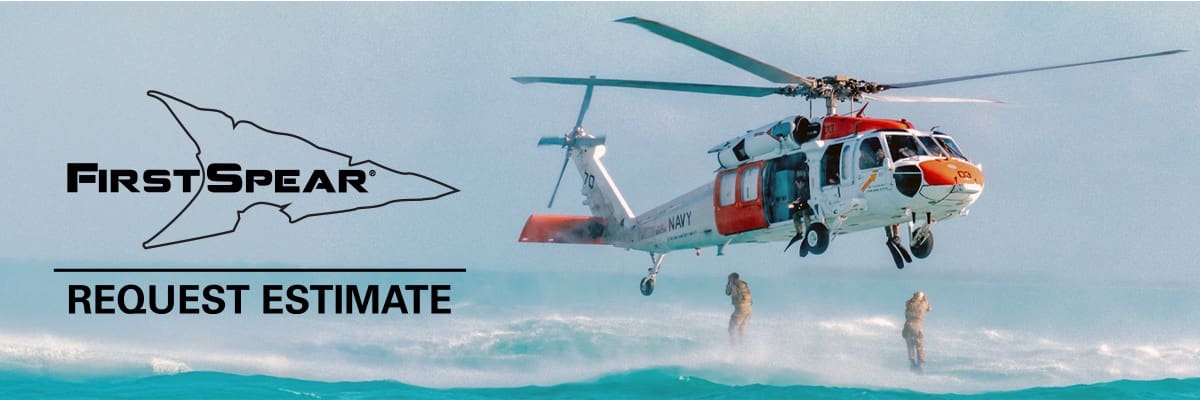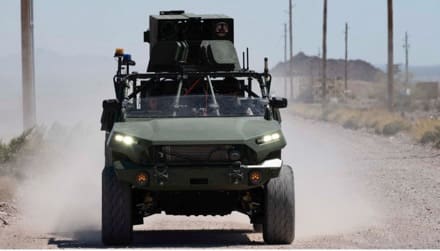
From maintenance to flying one-way missions to strike the enemy, soldiers have progressed their skills from flying to fighting with drones for the first time.

First Person View (FPV) Uncrewed Aircraft Systems (UAS) provide a precision strike capability on the battlefield and are being used to great effect by the Ukrainian Armed Forces. Flown using a virtual reality headset and carrying small explosive charges, the manoeuvrability of FPV UAS means they can punch above their weight and cost, such as flying through an open hatch to destroy an armoured vehicle by exploding inside it.
We’re teaching soldiers from the ground up how to configure and fly FPV UAS and then how to fight with them, working as a team alongside reconnaissance drones to find and strike targets.
COLOUR SERGEANT DANNY WADE, 2ND BATTALION THE PARACHUTE REGIMENT
At the Bramley ranges in Hampshire, a three-week workshop (7-25 July) has taught soldiers already trained to fly FPV UAS about how to fight with them – known in military jargon as One Way Attack (OWA). The training was split between classroom lessons, flight simulators and training in the field to teach soldiers how to work with reconnaissance UAS to fly strike missions, while avoiding being targeted by enemy UAS and Electronic Warfare capabilities.

The workshop was delivered by 2nd Battalion The Parachute Regiment’s UAS Platoon, the first to be set up in the Army. The instructors have trained at the Army’s UAS Centre at Lulworth as OWA team commanders and were cascading their skills to qualify soldiers from across 1st (UK) Division as OWA operators.
Colour Sergeant Danny Wade, commander of 2 PARA’s UAS Platoon, lead the training.
“We’re teaching soldiers from the ground up how to configure and fly FPV UAS and then how to fight with them, working as a team alongside reconnaissance drones to find and strike targets,” he said. “It’s very different training and FPV flying is a hard skill to learn, but everyone has put the effort in and progressed well.
This is where warfare is going, and it is interesting to be part of it. The skills I’ve learnt are very different to what you would expect an infantry soldier to do.
KINGSMAN KAIDYN HILTON, 1ST BATTALION THE DUKE OF LANCASTER’S REGIMENT
“The entry point is for a soldier to have 30 flying hours on a simulator, and across the three weeks they’ll have logged another 100 hours both on the simulator and flying. The ability to fly accurately is more important than speed, because we want to able to hit exact points on a target to maximise the damage.”

Kingsman Kaidyn Hilton, of 1st Battalion The Duke of Lancaster’s Regiment, said his unit had used UAS for reconnaissance assets “for some time”, but OWA was “something new”.
“FPV drones are hard to fly, because you are fully in control of it, whereas a normal drone is basically on autopilot and you’re directing it where to go,” he said. “It can be disorientating because when you’ve got the goggles on you need to really concentrate on flying, and you’re getting told information about the tactical situation by someone who is outside the bubble that you are in. There’s a dose of adrenaline, because you know you’ve got control of a weapon that can hit bigger targets more quickly than the infantry used to be able to do.
“This is where warfare is going, and it is interesting to be part of it. The skills I’ve learnt are very different to what you would expect an infantry soldier to do.”
It’s been a steep learning curve for us with a lot of trial and error. There’s so much to think about, from logistics to command and control, and how we coordinate UAS with artillery and air support.
COLOUR SERGEANT DANNY WADE, 2ND BATTALION THE PARACHUTE REGIMENT
PARA’s UAS Platoon, formed in late 2024, is at the forefront of bringing OWA into how the Army fights. It has taken part in 2 PARA exercises as both friendly and enemy forces to get the battalion thinking about operating with and against drones.

CSgt Wade said: “The battalion took the decision to create a specialist platoon to really make the most of UAS. This is an entirely new class of weapon and, as yet, there’s no formal Army doctrine on OWA. It’s been a steep learning curve for us with a lot of trial and error. There’s so much to think about, from logistics to command and control, and how we co-ordinate UAS with artillery and air support.
When I joined up, drones were a niche capability somewhere in the artillery world, and I would never have thought that in my career I would be training infantry soldiers as pilots.
COLOUR SERGEANT DANNY WADE, 2ND BATTALION THE PARACHUTE REGIMENT
“We’ve looked hard at the technology, studied how the Ukrainians and NATO armies are using it, and developed our own tactics. This workshop is about sharing our thinking and skills for the soldiers we’re training to take back and adapt to suit their unit’s role and approach.”

CSgt Wade joined the Army in 2008 and has deployed on operations in Afghanistan twice.
“When I joined up, drones were a niche capability somewhere in the artillery world, and I would never have thought that in my career I would be training infantry soldiers as pilots,” he said.
“At first, there wasn’t much enthusiasm for UAS, because the culture was that paratroopers are about kicking down doors and clearing trenches. But there’s been a real shift, because everyone can see what’s happening with UAS in Ukraine and that they are going to feature massively on future battlefields.”
Via British Army
MOD Crown Copyright








































































































































